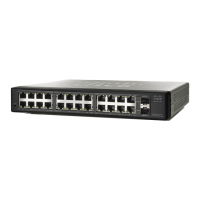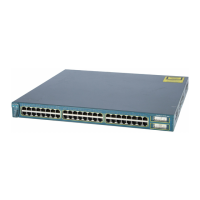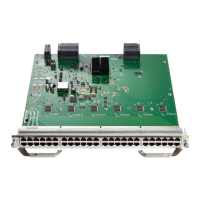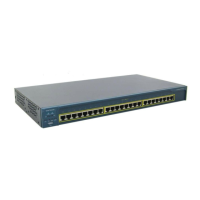Initial Switch Configuration
Assign Initial Management Information
21
Best Practice User Guide for the Catalyst 3850 and Catalyst 3650 Switch Series
Step 7 To save your configuration, use the write memory EXEC command in privileged mode.
Assign an IP Address to the Switch
Assign an IP to the switch, so that the switch can be managed remotely instead of being restricted to
management through a direct connection to the console port.
Although the switch supports multiple IP addresses for switch management, only primary IP address is
responsible for switch management.
Two types of IP addresses are used for switch management—in-band and out-of-band.
An in-band IP address is an address assigned to an interface that is reached through the production
network. Examples of in-band interfaces that have assigned IP addresses are VLAN, Ethernet, and
loopback interfaces.
An out-of-band IP address is an address assigned to an interface that is unreachable through the
production network. Out-of-band networks are more common in large network deployments. If you do
not have an Out-of-band network, use only an in-band network for management.
On the switch, the out-of-band interface is GigabitEthernet 0/0. The GigabitEthernet 0/0 interface is not
connected to the internal switching hardware, but directly to the CPU. IP traffic on GigabitEthernet 0/0
does not use the operating network. If the physical topology of the switch deployment does not support
out-of-band, then the switch can be managed with an in-band IP address.
We recommend that the switch be assigned multiple IP addresses for high availability; one IP address on
the out-of-band interface, and one on the in-band interface. High availability for switch management
ensures that the most available switch on the switch stack is the active switch and that it has a
management IP address so that all the stack members are accessible for management. You can have both
an in-band and out-of-band IP addresses as long as they are not in the same subnet. The preferred method
for management is out-of-band, because it is highly available and less likely to be impacted by DOS and
broadcast storms. The GigabitEthernet 0/0 interface on the switch is used for out-of-band management.
Configure the management IP addressees, as described in these sections:
• Configure a Management IP Address on an Out-of-Band Interface
• Configure a Management IP Address on an In-Band Interface
• Create a Management VLAN in Hardware
aaa new-model
tacacs server TACACS-SERVER-1
address ipv4 192.168.254.10
key cisco123
exit
!
aaa group server tacacs+ TACACS-SERVERS
server name TACACS-SERVER-1
exit
!
aaa authentication login default group TACACS-SERVERS local
aaa authorization exec default group TACACS-SERVERS local
ip http authentication local

